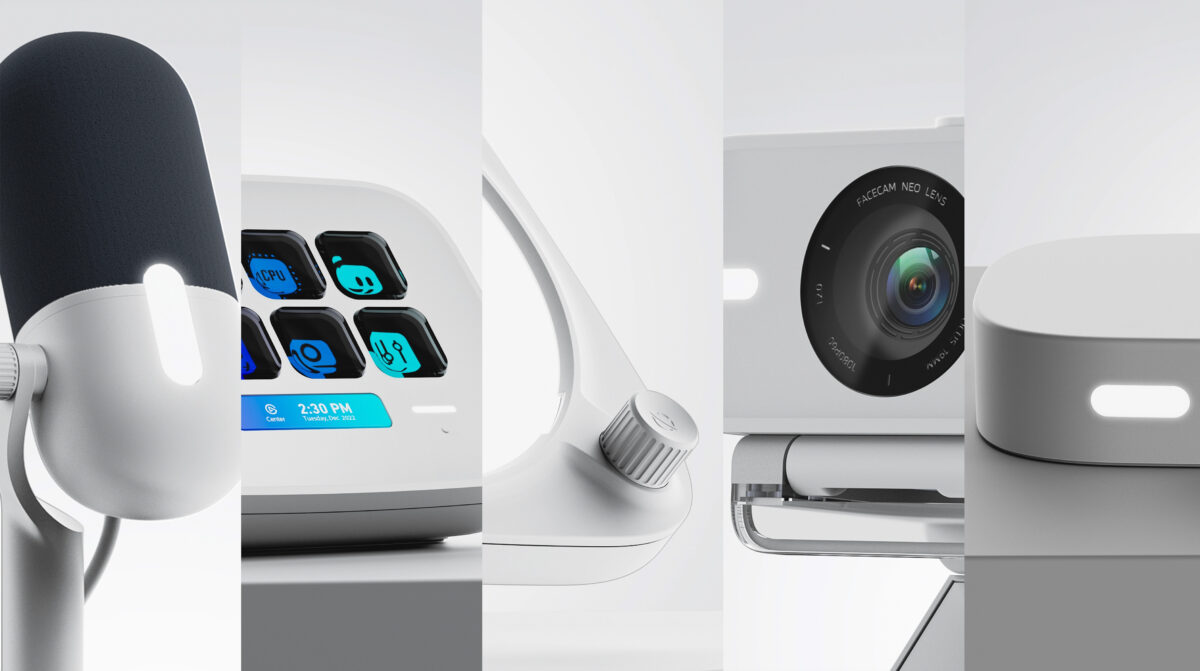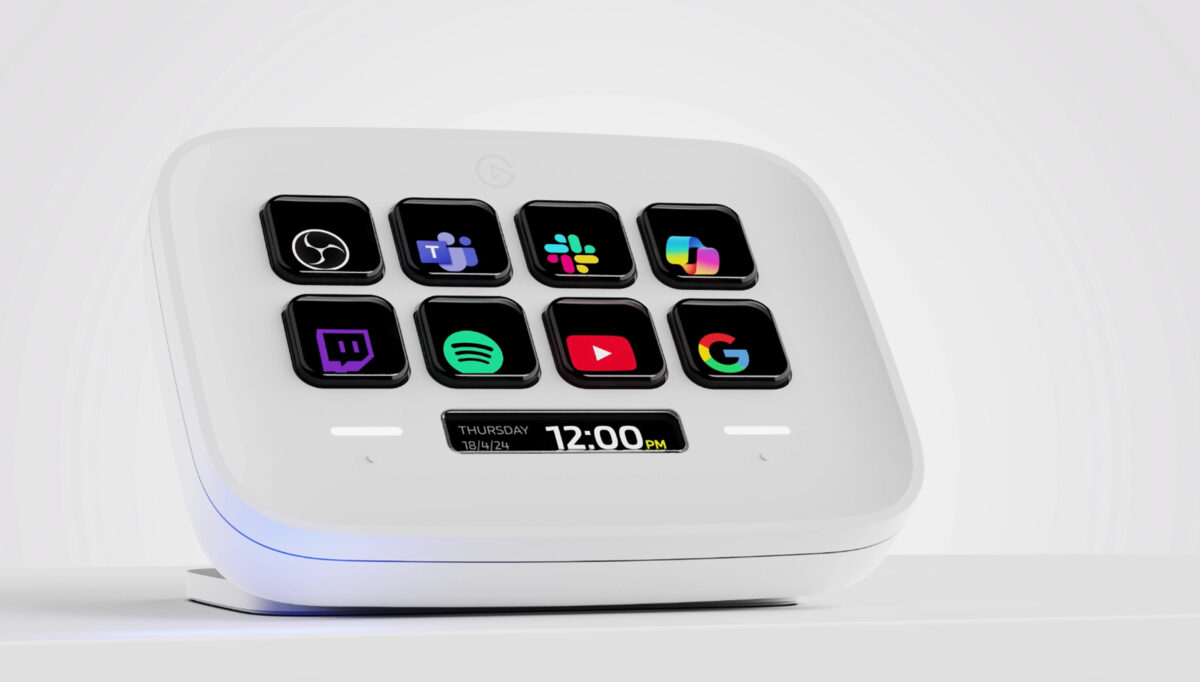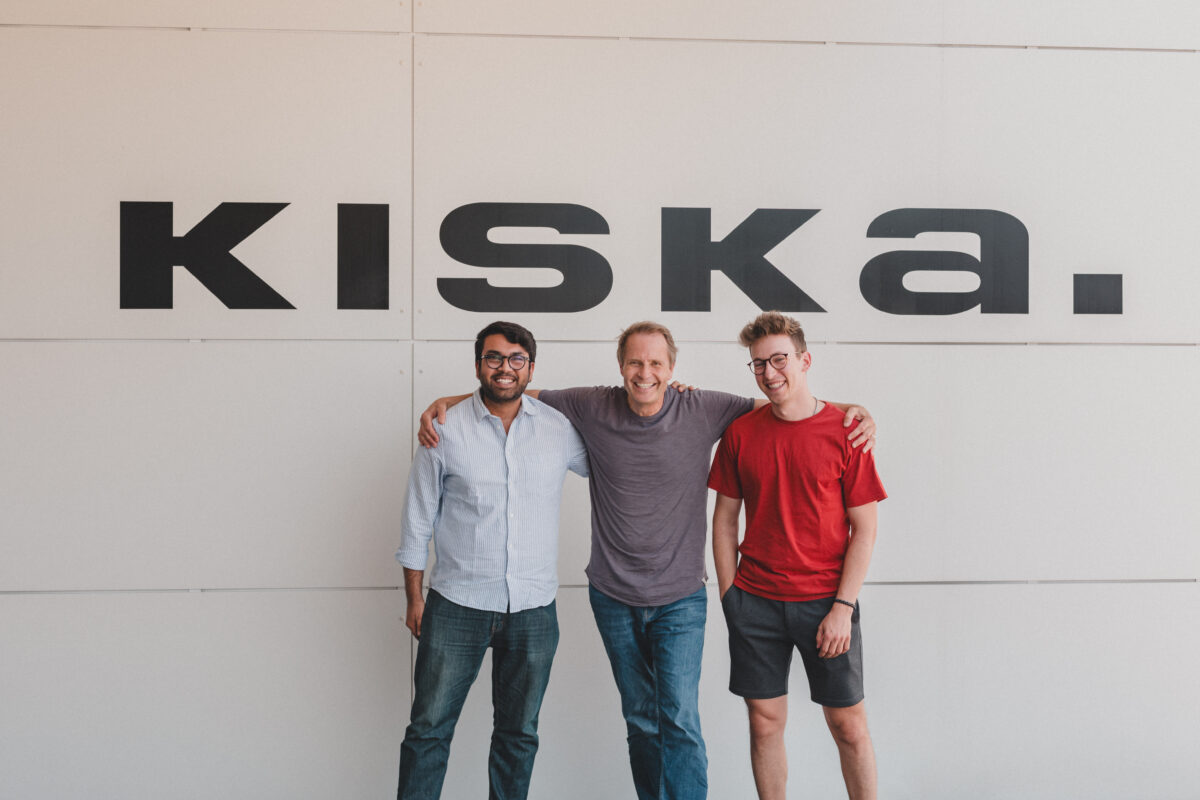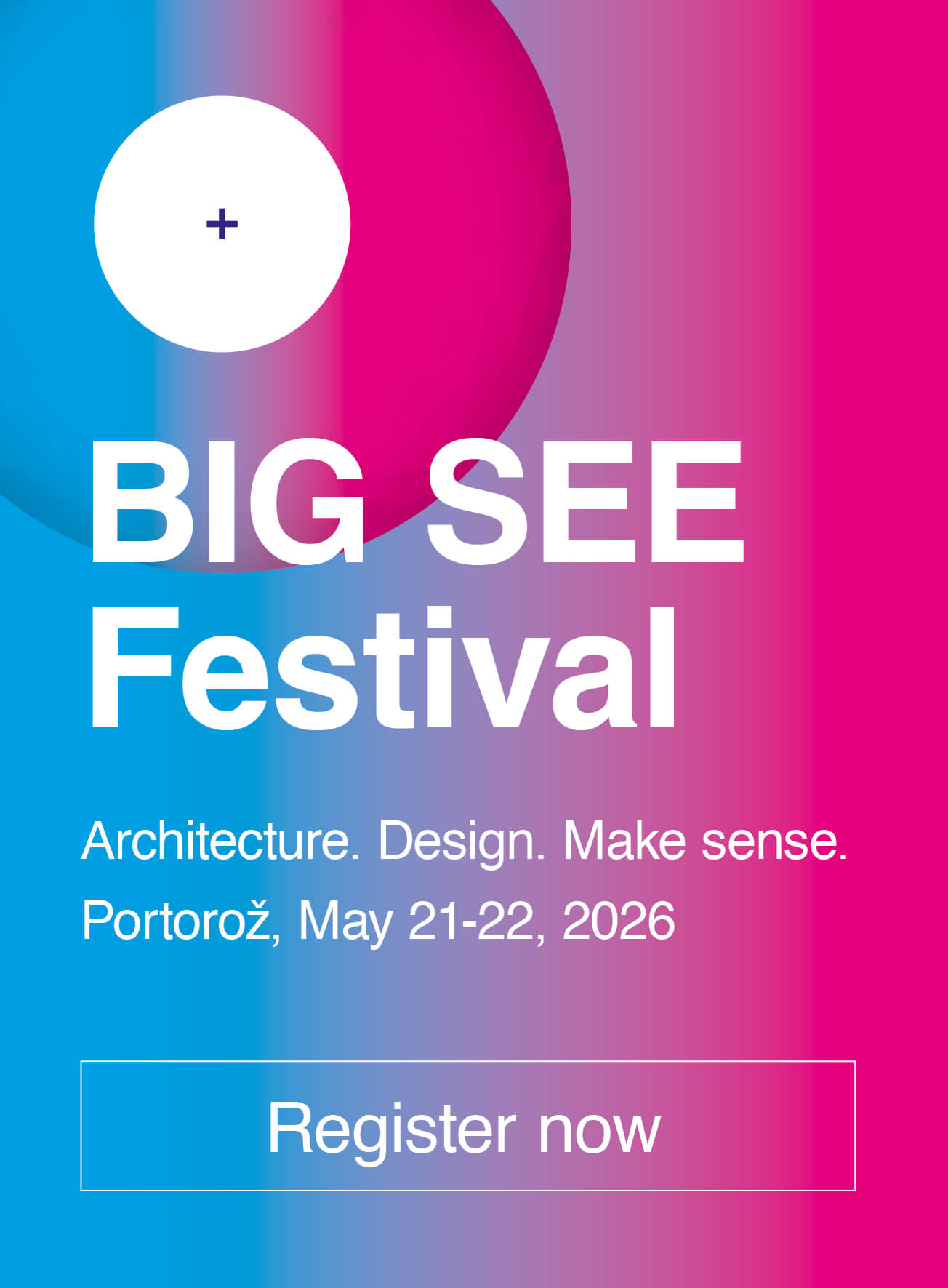
KISKA designed the Elgato Neo range to feel less like intimidating tech and more “desk-friendly”. The idea was simple: create tools that are easy to use, easy on the eyes, and genuinely enjoyable to interact with.
Each product in the Neo line – stream deck, key light, facecam, microphone, and capture card – was shaped with clarity and simplicity in mind. No flashing lights or sharp edges, just clean lines, soft curves, and friendly details that feel approachable from the first touch. KISKA gave them a playful, minimal look that works just as well in a home office, bedroom, or streaming setup.
But it’s not just about looks. Neo products are plug-and-play, with features that make sense. Any set up or adjustment takes just seconds with clear haptic zones, pre-loaded functions, and low assembly needs. The Stream Deck Neo, for example, has eight crisp buttons and an easy-to-read Infobar that helps you stay in control. And as users get more confident, the software lets them customise everything to fit their style.
Neo was designed for everyday creators, students, remote workers; anyone who wants great tools without the fuss. It’s tech that doesn’t take itself too seriously, but still gets the job done beautifully.

BIG SEE Talks with KISKA
Q: When you’re responsible for every aspect of a product – from hardware to packaging – does it give you a stronger sense of control, or is it actually easier to focus on just one part of the process?
A: As a designer, you naturally aim to be involved in the entire process (from hardware to packaging) to craft a holistic and coherent experience for the user. It’s not so much about having control but about understanding how each decision influences the next. This interconnectedness allows you to shape a more thoughtful and refined product.
“It’s not about control — it’s about understanding how each decision influences the next.”
– KISKA

Q: What does it take to design a product that feels truly “ultra-intuitive” right out of the box – and how do you even begin to test something that instinctive?
A: It all starts with a deep understanding of who you’re designing for and what they need. In this case, that means immersing yourself in the world of entry-level gamers and content creators, learning their pain points, their frustrations, and their aspirations. From there, it’s about identifying how the product can lower the barrier to entry and make their first experience feel seamless, empowering, and intuitive.
“You start by immersing yourself in your users’ world — their needs, frustrations, and aspirations.”
– KISKA

Q: Tech products are often overdesigned for professionals – full of features but lacking warmth. What was the biggest challenge in doing the opposite with Neo, and how did you manage to make it feel so soft, friendly… even a little bit cute?
A: The initial brief was to create a new product family tailored for beginner streamers, content creators, and mobile workers. With that in mind, we focused on smooth gestures and soft silhouettes that convey accessibility and make the devices feel inviting to touch, play, and create. At the same time, sharp cuts, clean recesses and recurring pill-shaped elements were used to highlight functionality and strike a balance between approachability and purpose.
“We wanted to lower the barrier to entry and make the first experience feel seamless and empowering.”
– KISKA

KISKA

KISKA is an independent design and brand agency based in Austria, working across product design, mobility, strategy, and user experience. With a multidisciplinary and hands-on approach, the studio collaborates with global clients to solve business challenges and create integrated design solutions that connect form, function, and identity. The KISKA design team behind the Elgato Neo project includes Nils Radau, Tanay Vora, and Julian Staudinger.
Project
Elgato Neo Line
Year of Completion:
2024
Location:
Austria
Contacts
Website:
kiska.com
Instagram:
@kiskadesign
Photography:
KISKA
Edited by:
Blažka Drnovšek
Powered by

KISKA designed the Elgato Neo range to feel less like intimidating tech and more “desk-friendly”. The idea was simple: create tools that are easy to use, easy on the eyes, and genuinely enjoyable to interact with.
Each product in the Neo line – stream deck, key light, facecam, microphone, and capture card – was shaped with clarity and simplicity in mind. No flashing lights or sharp edges, just clean lines, soft curves, and friendly details that feel approachable from the first touch. KISKA gave them a playful, minimal look that works just as well in a home office, bedroom, or streaming setup.
But it’s not just about looks. Neo products are plug-and-play, with features that make sense. Any set up or adjustment takes just seconds with clear haptic zones, pre-loaded functions, and low assembly needs. The Stream Deck Neo, for example, has eight crisp buttons and an easy-to-read Infobar that helps you stay in control. And as users get more confident, the software lets them customise everything to fit their style.
Neo was designed for everyday creators, students, remote workers; anyone who wants great tools without the fuss. It’s tech that doesn’t take itself too seriously, but still gets the job done beautifully.

BIG SEE Talks with KISKA
Q: When you’re responsible for every aspect of a product – from hardware to packaging – does it give you a stronger sense of control, or is it actually easier to focus on just one part of the process?
A: As a designer, you naturally aim to be involved in the entire process (from hardware to packaging) to craft a holistic and coherent experience for the user. It’s not so much about having control but about understanding how each decision influences the next. This interconnectedness allows you to shape a more thoughtful and refined product.
“It’s not about control — it’s about understanding how each decision influences the next.”
– KISKA

Q: What does it take to design a product that feels truly “ultra-intuitive” right out of the box – and how do you even begin to test something that instinctive?
A: It all starts with a deep understanding of who you’re designing for and what they need. In this case, that means immersing yourself in the world of entry-level gamers and content creators, learning their pain points, their frustrations, and their aspirations. From there, it’s about identifying how the product can lower the barrier to entry and make their first experience feel seamless, empowering, and intuitive.
“You start by immersing yourself in your users’ world — their needs, frustrations, and aspirations.”
– KISKA

Q: Tech products are often overdesigned for professionals – full of features but lacking warmth. What was the biggest challenge in doing the opposite with Neo, and how did you manage to make it feel so soft, friendly… even a little bit cute?
A: The initial brief was to create a new product family tailored for beginner streamers, content creators, and mobile workers. With that in mind, we focused on smooth gestures and soft silhouettes that convey accessibility and make the devices feel inviting to touch, play, and create. At the same time, sharp cuts, clean recesses and recurring pill-shaped elements were used to highlight functionality and strike a balance between approachability and purpose.
“We wanted to lower the barrier to entry and make the first experience feel seamless and empowering.”
– KISKA

KISKA

KISKA is an independent design and brand agency based in Austria, working across product design, mobility, strategy, and user experience. With a multidisciplinary and hands-on approach, the studio collaborates with global clients to solve business challenges and create integrated design solutions that connect form, function, and identity. The KISKA design team behind the Elgato Neo project includes Nils Radau, Tanay Vora, and Julian Staudinger.
Project
Elgato Neo Line
Year of Completion:
2024
Location:
Austria
Contacts
Website:
kiska.com
Instagram:
@kiskadesign
Photography:
KISKA
Edited by:
Blažka Drnovšek





